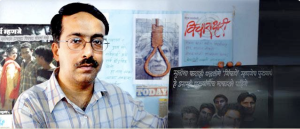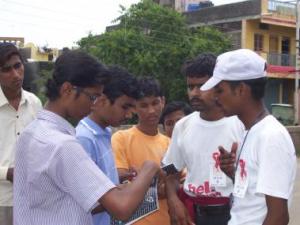Yes, you read right. In 1991, a prominent Indian journalist put an ad in a major paper reading “WANTED: Men who believe that woman are not for battering.” 205 men responded to the ad. It mayn’t seem like many. But a year later after several meetings of these like-minded men, one very special man, Harish Sadani, decided to launch a non-profit organisation: Men Against Violence and Abuse or MAVA. It is the first organisation in India where men are standing up against gender-based violence against women. And it sends out a strong message in a country where men are major perpetrators of violence against women.
MAVA educates men and explores their roles in society as stakeholders and partners in gender issues dealing with women, including the role they play in helping empower women. They do this through cultural advocacy, intervention and youth education. He believes that women’s violence is a public health concern and a human right issue.
He works at deconstructing masculinity, and replacing a patriarchal value system that is disrespectful to women, with a more egalitarian one that empowers them. And he and MAVA teach men that they play a role in improving women’s lives.
Sadani has a new and intelligent perspective on women’s violence and abuse. He feels that the focus has always been on empowering women in order to tackle gender based violence. But this “isolates and insulates men from the process of transformation and keeps them embedded in their patriarchal mould.”
In 2006, he founded Yuva Maitri, a youth-based initiative, it’s Marathi for “Friendship Amongst Youth” It teaches young men to respect women from an early age, to see them as friends and equals vs. sex objects or their subordinates in society. He works with men in Maharashtra aged 18-20 and educates them on issues like masculinity, sexual health and gender sensitivity. Sadani believes young men are open to attitude change, more impressionable and willing to question, rather than just take things at face value.
Sadani and MAVA believe that “the children are the future,” and that a focused and long-term effort with these young men, will create a new generation that won’t believe in gender-based violence and will help prevent it amongst their fellow-men. They select young men who they feel have leadership skills and creativity to be ‘communicators’ and can help train peers and share the egalitarian ideals their peers, who in turn will embrace these and pass on the message further. This ensures that other men their own age now have people with proper knowledge that are ‘safe’ to talk to about dilemmas, fears and perceptions and be given the right advice and info. To date, 20,000 men have been reached and 5000 women through MAVA and Yuva Maitri’s awareness and outreach programs.
Through their work they’ve now noticed significant changes in men’s attitudes in colleges, from harassing and teasing their female colleagues, to an ease in communicating with them, studying together, helping one another and more. Some of the young men have begun to share in the workload at home, including tasks traditionally seen as “women’s work,” like washing dishes, sweeping and laundry. Some students fight home battles to get more freedom for their mothers and sisters and one even against an arranged marriage his sister didn’t want. That is amazing in India and a real breakthrough.
Sadani is well aware that this is just the beginning and this is a long-term educational process that in truth, needs the help of governments, other organisations, communities and more.
It is really beautiful to see men taking such a massive and active role in changing patriarchal mindsets amongst their own and helping to empower women – a role traditionally taken on by women in society – especially in India. Sadani sends out the message that men aren’t just perpetrators, they are change makers. All you need to do is give them the education, the knowledge, and the opportunity to change and spread change.
Links:
http://www.changemakers.com/en-us/men-against-violence-and-abuse















